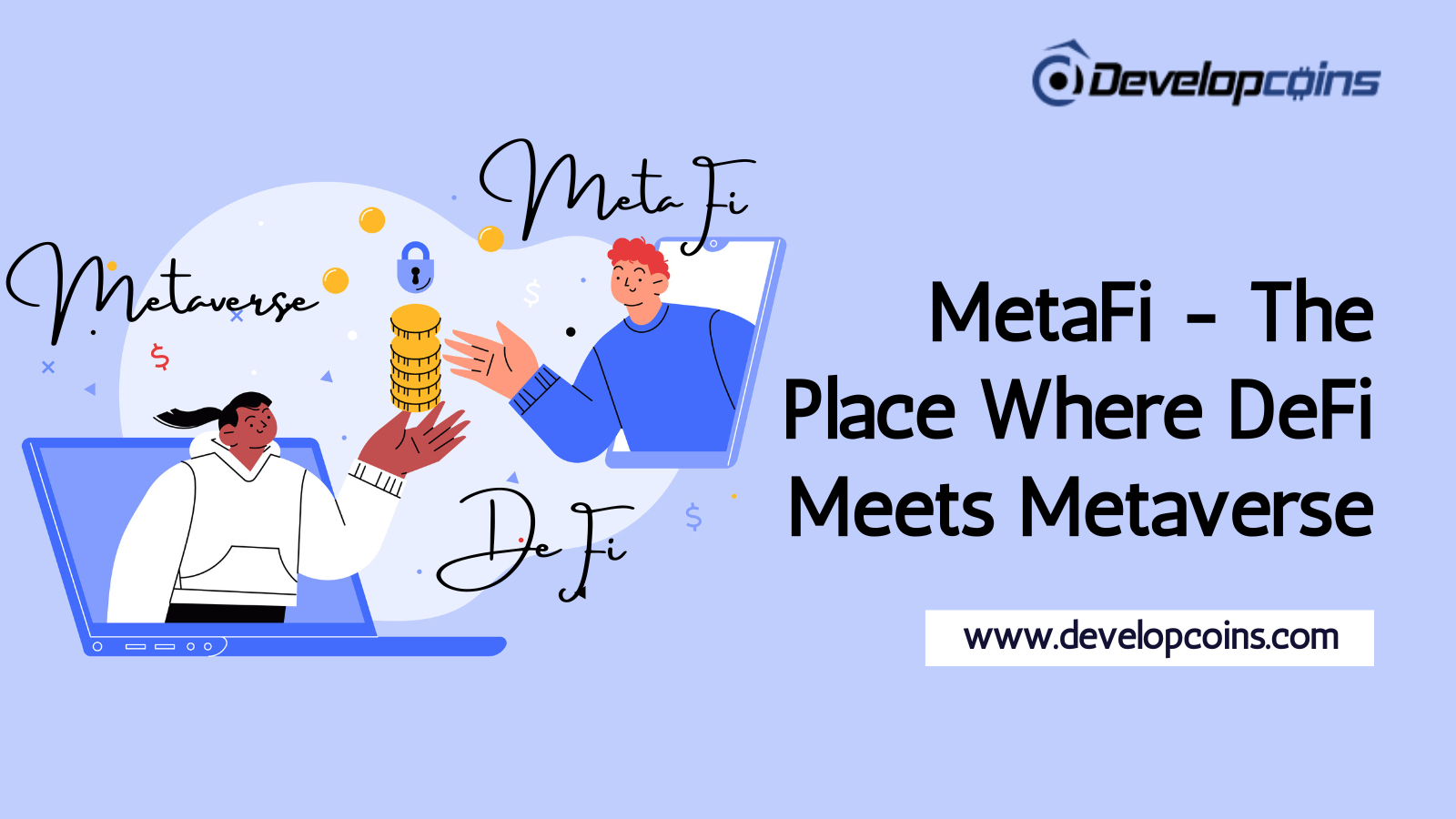

MetaFi seems to be the next big step when considering the use cases. Get to know what happens when DeFi meets the metaverse in this blog.

The concept of Decentralized Finance (Defi) has been widely debated. According to the report, from less than $1 billion the year before, the decentralized finance (DeFi) sector grew to $15 billion in 2020.
The metaverse realm and digital experiences have emerged as another technical innovation at the same time. The metaverse market is expected to expand from $478 billion in 2020 to $783 billion in 2024. DeFi and the metaverse are combinedly called as MetaFi which creates a new parallel economy with enormous potential.
Blockchain technology standardizes digital assets through MetaFi. By doing this, any marketplace or virtual environment would be capable of filtering and analyzing cryptocurrency, financial transactions, and NFTs.
Still, confused about what MetaFi's all about? This article will show you and explain in detail.
MetaFi is the combining the words Meta for metaverse and Fi for DeFi. With the help of the MetaFi paradigm change, blockchain technology will be standardized for typical Web2 large-scale applications like games, social media, and the metaverse. This would create a common standard that enhances interoperability.
In other words, MetaFi is the first NFT-based Defi platform in the world that enables lending and value appraisals at scale. It is a concept that provides complex and advanced Defi Infra. It unifies all the many project kinds under one roof, including metaverse, GameFi, SocialFi, Web3, and NFTs. Thus, it can only exist because of the metadata that identifies asset ownership.
For interoperability, MetaFi makes use of the fact that the majority of blockchains contain data about assets. For instance, the metadata of an NFT will always contain a link to the associated image. A bitcoin(BTC) transaction also supports the addition of metadata, which enables you to insert unencrypted data.
Because every blockchain can employ the same metadata standards, assets will be sortable and machine-readable. An NFT marketplace might start analyzing and classifying NFTs from all blockchains if they all present their metadata in the same way.
For DeFi to be implemented at scale in the metaverse, MetaFi is essential. Let's examine some of its primary advantages so you may decide for yourself.
Global expansion:
Private blockchain networks and platforms currently contain value worth billions of dollars. However, removing these barriers will lead to a rise in digital asset traders, markets, and marketplaces.
Increased inducement to trade:
If these assets are available across virtual worlds, people are more inclined to buy, sell, and rent avatars, digital wearables, and virtual real estate.
Creators are in control:
Decentralization and interoperability keep creators in charge of their work. If the DeFi MetaFi assets are freely tradeable between platforms, monopolistic threats are reduced. Additionally, it means that unlike with platforms like Roblox, the developers won't accept a little portion of the possible income.
Financial gaming industry:
Generation Z is far more at ease with online trading and investing. The acceptance of Dogecoin and meme stocks serves as evidence. This is why integrating DeFi with MetaFi will undoubtedly pique the interest of younger people.
Competitive markets:
Decentralized marketplaces can sort multiple crypto transactions and NFTs from different blockchains using uniform metadata standards.
Applications of MetaFi:
When MetaFi is finally built, it will significantly alter the potential of dApps in a number of ways. Here are some potential uses:
Marketplaces:
By giving collectors access to all NFTs in a single interface, we might potentially create marketplaces using MetaFi that list every single asset type that can exist in various chains, improving the user experience of collectors and facilitating more effective and convenient asset exchange.
Fan Tokens:
The creation, acquisition, and exchange of fan tokens can be streamlined using MetaFi if standard information for various tokens and platforms is in place. Currently, each blockchain and platform has a different method and cost for creating and exchanging them.
NFT Yield Farming:
NFTs can be used as collateral for cryptocurrency loans rather than collecting dust in wallets, enabling you to renew the lent assets at a higher rate and increase your income. The operation of these NFTs may vary depending on the provider.
Metaverse:
The creation of numerous, long-lasting shared interfaces where users can interact with one another for various objectives, including socializing, trade, and other forms of consumption of unique experiences, is the long-term objective of the majority of metaverse conceptions.
A comparatively recent but futuristic idea called MetaFi seeks to unify many Web3 components under one roof. By embedding it into the metaverse, it has the ability to reconstruct trade and commerce by allowing users to trade and deal in real time without being constrained by the place.
Although the idea of MetaFi is still unclear to many people and the technological advancement of the metaverse is still being closely watched, it is important to note that, if properly implemented, MetaFi will bring a great deal of interoperability to the metaverse while allowing users to fully benefit from DeFi.
If you are interested in any projects or services related to metaverse development with DeFi get in touch with us and let us know what you need.